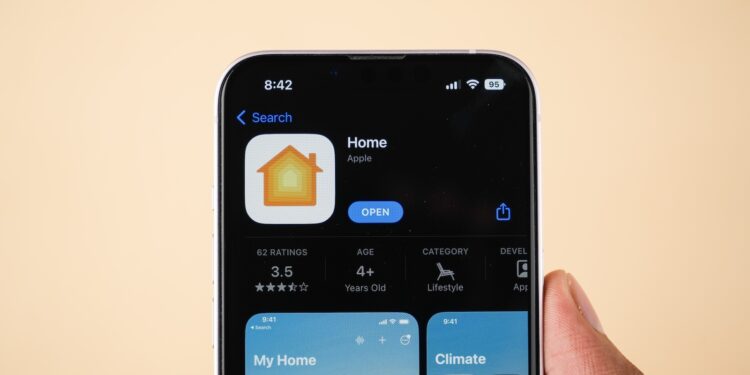Apple has officially confirmed that iOS 19 will no longer support the outdated Home app architecture. This means that an update to the new system is mandatory if you want to continue using your HomeKit devices after upgrading to iOS 19. The old architecture, which previously remained optional, will be completely replaced. Apple provides specific reasons and timeframes – and there are new features that work exclusively with the updated system.
The current Home app architecture was first introduced with iOS 16.2. Apple announced at the time that this new structure would improve the reliability and efficiency of HomeKit devices. However, the rollout wasn't smooth: Some users encountered technical issues, leading Apple to temporarily roll back the changes. It wasn't until iOS 16.4 that the new Home architecture was reintroduced—this time more stable. Since then, the update has remained voluntary. Users could decide for themselves whether they wanted to enable the new structure or not. This is changing with the upcoming iOS 19.
Old Home system will be shut down with iOS 19
As soon as iOS 19 is released, the old Home architecture will no longer be compatible. Apple has made it clear in a support document: Anyone who doesn't upgrade to the new system will lose their Home app features. Controlling devices, automations, and accessing accessories will no longer be possible without an update. A more prominent notification has appeared in the Home app in recent weeks, prompting you to update. The notices were initially subtle, but have now become noticeably urgent. The reason: According to Apple, support for the old Home app version will end in fall 2025. Apple states the following on its website:
Support for the previous version of Apple Home will end in fall 2025. Update now to avoid disruption to your accessories and automations.
New features only with the update
In addition to improved stability, the update also brings new features available exclusively with the updated architecture. These include:
- Guest access: You can grant certain people temporary access to your smart home.
- Support for robot vacuum cleaners: These devices can then be fully integrated via the Home app.
- Activity history: You can see when and how devices in your home were used.
These features are linked to the new Home system and are not available to users of the old architecture.
How to update to the new Home system
The update can be performed directly via the Home app on your Apple device. The steps are simple:
- Open the Home app on your iPhone, iPad, or Mac
- Tap or click the three-dot icon (More)
- Select “Home Settings”
- Select “Software Update”
- Tap or click Update Now and follow the instructions
- If you have set up multiple homes, they will all be updated at the same time
After successful completion, the app will display the message:
This house and all accessories are up to date.
iOS 19 forces you to switch to the new Home system
If you want to continue using your HomeKit devices, you can't avoid updating. iOS 19 will end support for the old Home architecture. The update is necessary for accessories and automations to continue working. At the same time, it brings new features that expand your smart home. The switch is easy to implement and is actively encouraged by Apple. Those who don't update in time risk functional failures—at the very latest with the release of iOS 19 and the introduction of homeOS. Apple is thus clearly setting the course for the future of its smart home system. (Image: Shutterstock / sdx15)
- Report: iOS 19 is said to be more stable than previous updates
- iOS 19 brings smart battery management with Apple Intelligence
- Apple TV+ shows the world of star chefs with Gordon Ramsay





